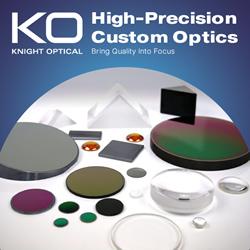Bionic Suit Allows Paralyzed Man to Walk at Huntington Hospital
Demonstration event provides wheelchair-bound individuals a look at the "possible" and hope for the future
PASADENA, Calif.--After transferring himself from a wheelchair into a robotic suit, onlookers held their breath with excitement as they watched 27-year-old Aaron Bloom grip the handles of specially designed crutches, raise to his full height, and walk at Huntington Memorial Hospital's Outpatient Rehabilitation Center on Wednesday. Bloom, who lost the use of his legs in a July 2010 accident, became one of the first Southern California residents to begin using the bionic suit designed by Ekso Bionics and now available at Huntington Hospital.
Other wheelchair-bound Southern California individuals, captivated by the prospect of using the robotic suit themselves, watched in awe as Bloom demonstrated this incredible new technology that enables people with lower-extremity paralysis or weakness to stand and walk. Huntington Hospital is the first hospital in Southern California and only the third in the western United States to offer the suit.
"It's a powerful experience to be able to regain an ability that I have lost," said Bloom. "I hope that other wheelchair-bound people will have the opportunity to walk across a room and once again see things from a higher vantage point."
Patients are able to walk with the assistance of Ekso™, a ready-to-wear, battery-powered bionic suit - or exoskeleton - that is strapped over the user's clothing. With the patient providing the balance and proper body positioning, Ekso allows patients to walk while a physical therapist uses the control pad to program the desired walking parameters, such as step length and speed, as well as control when the Ekso stands, sits and takes a step. It is powered by two high-capacity lithium batteries, which drive the hip and knee motors.
"What we are witnessing is the collective power of ingenuity, science and engineering combined with the human spirit," said Sunil Hegde, M.D., medical director of Huntington's Outpatient Rehabilitation Center. "The Ekso technology allows people to rethink current physical limitations and achieve the remarkable."
Ekso can be adjusted to fit most people between 5'2" and 6'2" who weigh 220 pounds or less. The user needs arm function and adequate upper extremity strength to manage crutches or a walker. An experienced user can transfer to/from their wheelchair and put on or off the Ekso in less than five minutes. The torso and leg straps are designed to enable the user/patient to easily get in and out of the device with no or minimal assistance. The learning curve is user specific, and usually individuals begin using a walker and progress to crutches.
The addition of the Ekso technology to Huntington Hospital's Outpatient Rehabilitation Center was made possible through the generosity of a challenge gift from donors Carol and Harry Tsao and Renata and Talmadge O'Neill. They made their donation in honor of their families' philanthropic legacies. Tsao and Talmadge are co-founders of Mezi Media and are investors in Ekso Bionics.
So as to encourage other people to support these much-needed services, Tsao and Talmadge have agreed to match dollar for dollar other community donations to the hospital's neuroscience program. "We are deeply grateful to these wonderful families for their support of important and life-changing care within our walls," said Dr. Hegde.
"While this technology is currently used only in rehabilitation centers, we join with Ekso in looking forward to the day when people will be able to utilize this technology on the sidewalks or in shopping malls," continued Dr. Hegde. "Since the robotic suit is a self-contained robotic and not tethered to a power supply, why not dream big?"
Currently 18 medical centers in the United States and two in Europe offer the Ekso exoskeleton device. Its manufacturer, Ekso Bionics, is headquartered in Richmond, California, with offices in London. Further information may be obtained at http://www.eksobionics.com.
Huntington Memorial Hospital is a 625-bed not-for-profit hospital that is home to the only Level II Trauma Center in the San Gabriel Valley. In addition to being granted Magnet® status in 2011, Huntington Hospital has been ranked nationally by U.S. News and World Report in two specialties and was named the 8th best hospital in California. Renowned for its programs in neurosciences, cardiovascular services and cancer care, Huntington Hospital is an active teaching hospital with graduate medical education programs in internal medicine and general surgery. Consistent with its mission, the hospital provides millions of dollars annually in charity care, benefits for vulnerable populations, health research, education and training, and support programs that may otherwise be absent from the community. For more information, go to www.huntingtonhospital.com.
Featured Product

